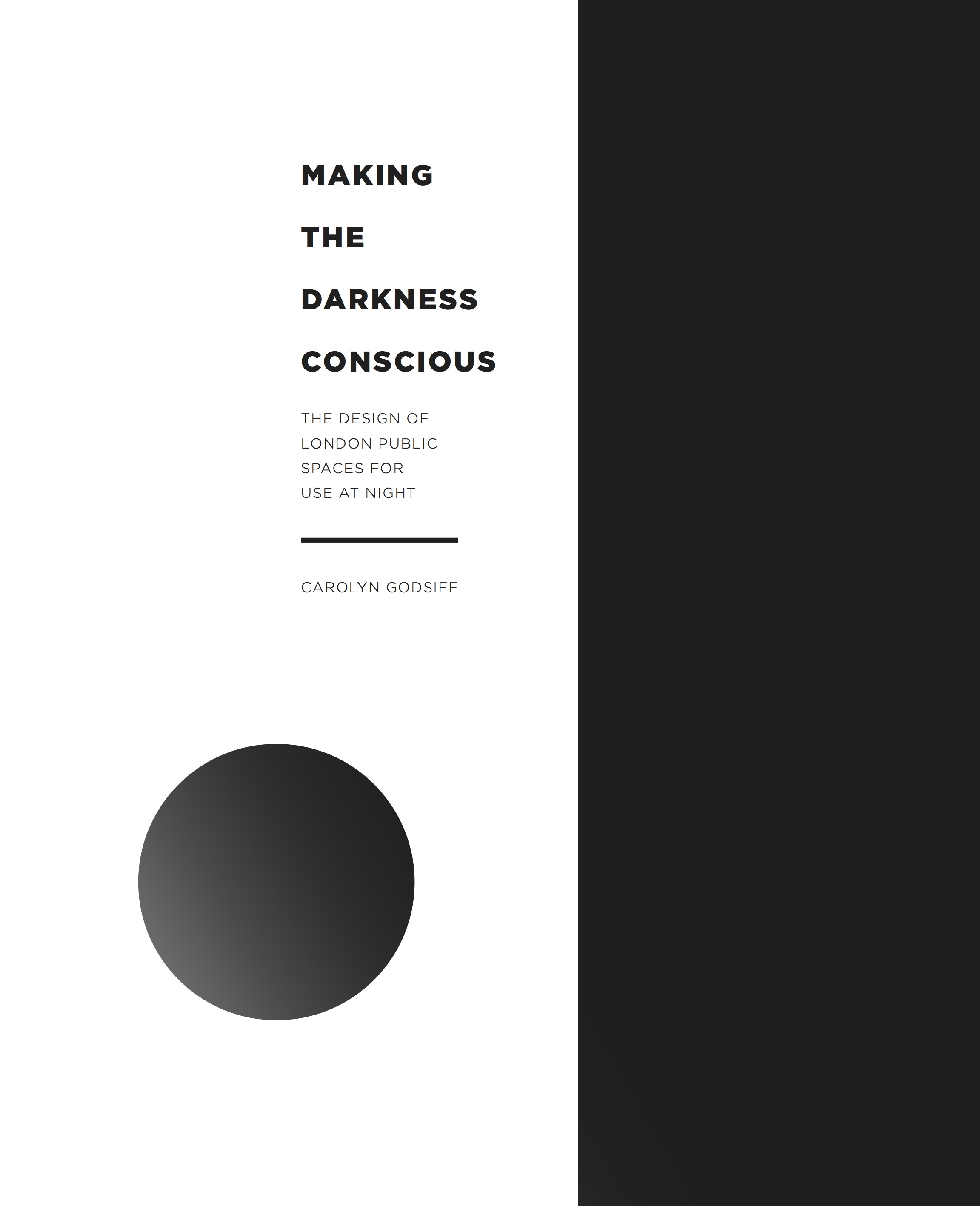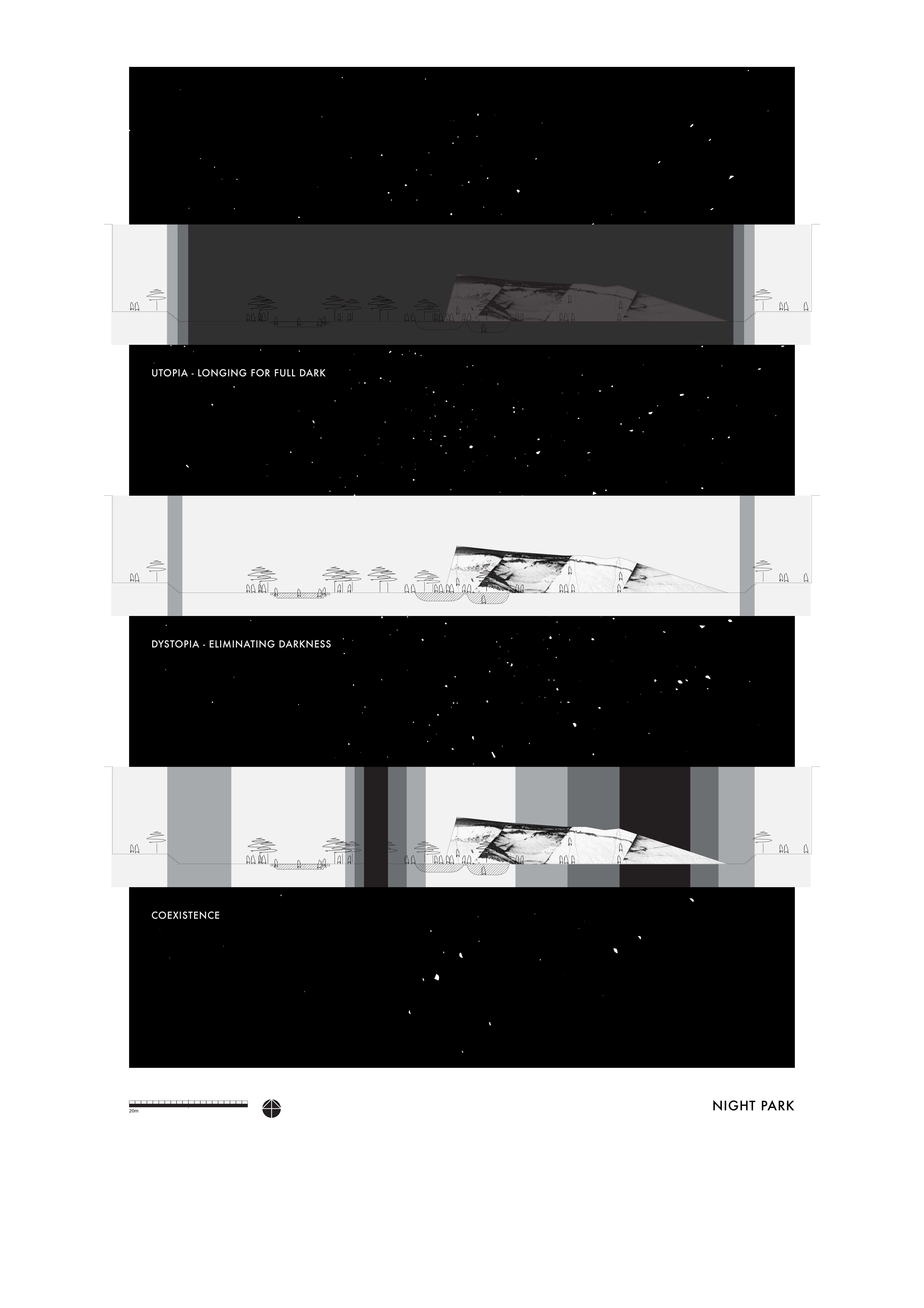
MAKING THE DARKNESS CONSCIOUS
THE DESIGN OF LONDON PUBLIC SPACES FOR USE AT NIGHT
Alluring, vibrant, cultured, intoxicating, illicit: the nocturnal life of London is as important to its identity as its days. The way
we experience the city at street level after dark can also reveal a great deal about how its citizens are regarded, highlighting issues that are less visible during the day. The perception of dark places as dangerous is historically well established. By the 18th Century London had become so difficult to police that the only outdoor places safe for nighttime entertainment were privately run: such as the Vauxhall Pleasure Gardens, where admission was charged to see its display of ‘15,000 glass lamps’.
The popularity of urban lighting for both safety and enjoyment appeared to be the ideal solution to resolve fear of the dark. By the 19th century, cheap and bright incandescent lights were introduced. The combination of conditioning to fear the dark with technological advances has led to the way we experience night-time streets now: a proliferation of lighting.
In 2013, a public realm framework emphasising ‘integrating the day and night-time economies’ was created for the area between Nine Elms and the South Bank, including the Vauxhall Pleasure Gardens. In 2017, the London
Mayor’s office launched its strategy for a 24-hour city, suggesting that night-time still has an underused value. Extending activity into the night could ‘create new jobs, improve conditions for existing night workers and create more space for culture’ – but should the night be treated as an extension of the day?
This essay explores the potential for Landscape Architects to use darkness as an alternative starting point for designing public spaces for use at night, as a lens to revel otherwise hidden ecologies and desires, and as a medium to create new experiences.
THE DESIGN OF LONDON PUBLIC SPACES FOR USE AT NIGHT
Alluring, vibrant, cultured, intoxicating, illicit: the nocturnal life of London is as important to its identity as its days. The way
we experience the city at street level after dark can also reveal a great deal about how its citizens are regarded, highlighting issues that are less visible during the day. The perception of dark places as dangerous is historically well established. By the 18th Century London had become so difficult to police that the only outdoor places safe for nighttime entertainment were privately run: such as the Vauxhall Pleasure Gardens, where admission was charged to see its display of ‘15,000 glass lamps’.
The popularity of urban lighting for both safety and enjoyment appeared to be the ideal solution to resolve fear of the dark. By the 19th century, cheap and bright incandescent lights were introduced. The combination of conditioning to fear the dark with technological advances has led to the way we experience night-time streets now: a proliferation of lighting.
In 2013, a public realm framework emphasising ‘integrating the day and night-time economies’ was created for the area between Nine Elms and the South Bank, including the Vauxhall Pleasure Gardens. In 2017, the London
Mayor’s office launched its strategy for a 24-hour city, suggesting that night-time still has an underused value. Extending activity into the night could ‘create new jobs, improve conditions for existing night workers and create more space for culture’ – but should the night be treated as an extension of the day?
This essay explores the potential for Landscape Architects to use darkness as an alternative starting point for designing public spaces for use at night, as a lens to revel otherwise hidden ecologies and desires, and as a medium to create new experiences.



